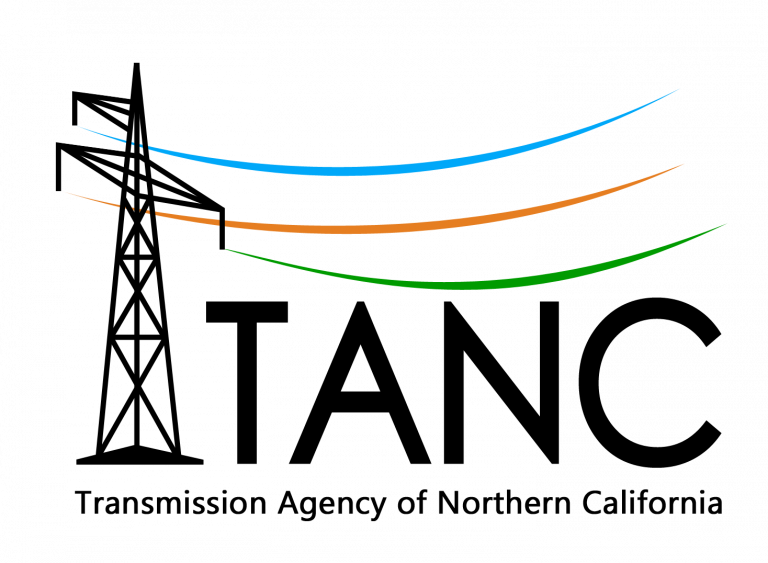A Basic Primer on How Electricity Moves
Before getting into the nuts and bolts of what goes into a transmission line, it’s worth taking some time to provide a very simple explanation of how electricity gets from point A to point B via a transmission system.
The story of electric transmission involves a few important words: voltage, conductor, current, amperes, ohms, resistance, and watts or megawatts. These terms are all defined in the Glossary section, but the easiest and most common way to explain them and how they all work together is to use “the water analogy.”
Using the Water Analogy
Just like a system is needed to get drinking water from a source to your home, a transmission system moves electricity from its source to your home; but instead of moving water through pipes, electric transmission involves moving electrons through conductors, which are the wires you see connected by steel towers or wooden poles.
Voltage is the equivalent of the pressure that moves the water through the system. The higher the voltage, the more “push” is provided. Transmission lines considered “high voltage” are classified as 230-kilovolt (kV) or 500-kV lines (one kV equals 1,000 volts).
Current in water would be the amount of water that flows past a certain point over a given time. In electric transmission, current is the amount of charge that passes a given point every second as it is traveling through the conductor (wire). It is measured in units called amperes.
Resistance is like rocks in a stream, it impedes the flow of water. In transmission, resistance is the term that describes all the forces that oppose the flow of electron current in a conductor. It is measured in units called ohms. The more resistance there is in a line, the more voltage or force must be used to overcome it.
Watts and megawatts are the units of power; in simplest terms the watts are what turn your lights on. One watt is equal to one ampere of current per second. One megawatt (MW) equals 1,000,000 watts.
To put this all onto a simple illustration, if electricity was a river flowing over a waterfall, and there was a flour mill at the bottom of the falls with a grindstone driven by the falling water, then amperes would measure the current of the water, volts would measure the height of the waterfall, and watts would measure the amount of grain that could be ground into flour. A watt-hour would be the amount of grain that could be milled in one hour.
Where Electricity Comes From: Generation
Electricity doesn’t “exist” in the natural environment in the sense that there are great pools of it that can be tapped. Electricity for human use must be generated through some kind of energy source.
There are multiple sources of electricity generation. These include coal, oil or natural gas-burning power plants, nuclear power plants, and renewable sources such as wind, sunlight (solar), hydroelectric, geothermal and biomass. Chances are the power in your home comes from a combination of these sources.
Getting Energy from its Source to Your Region: Transmission
Typically, large sources of electricity generation are located far from the communities that need the power (known as load centers). This is especially true for large-scale renewable energy sources, which are often concentrated in rural and sparsely populated areas. Transmission is the means for getting electricity from these power sources to populated areas.
The textbook example of a transmission system involves a combination of substations and transmission lines. What each individual transmission system looks like is a function of several variables as well as a host of federal, state and sometimes local requirements and restrictions (for more information, see Designing a Transmission Line).
The role of the substations is primarily to step-up or step-down the voltage in the line. For example, electricity generated at a solar farm or a power plant might be produced at a (comparatively) low voltage, somewhere between 2 and 30-kV. At the substation the voltage would be “stepped up” to as much as 500-kV for transmission over long distances to a load center. From there the voltage would be stepped down for distribution to individual homes. Voltage is stepped up and down to reduce the amount that is lost when carrying it over long distances, this helps to make the electric system more efficient – the higher the voltage the lower the losses.
How the Energy Gets to Your Home: Distribution
Distribution is basically the wiring system that connects transmission substations to electricity customers. The term “distribution” refers to the historic business model separating the wholesale electric transmission business from the distributor who delivers the electricity to homes.
The “consumer” of electric energy is referred to in the industry as load. Loads can be as small as a cell phone plugged in to a wall charger or as large as a major industrial plant.
How it All Works Together
A transmission grid is a network of electricity generators, transmission lines (or circuits) and substations that are all interconnected to provide a level of redundancy and therefore, reliable electric service even if a few links in the chain are broken. Below is a graphic and very simplified illustration of the four main components of a transmission grid: generation, transmission, distribution and load.
The electric grid is a little like the road system. The distribution system is the local roads in your neighborhood or city while the transmission system is similar to the freeway connecting distant cities. In order to travel from one city to another, you must drive on the freeway to get to the area and then the local roads to your ultimate destination.
